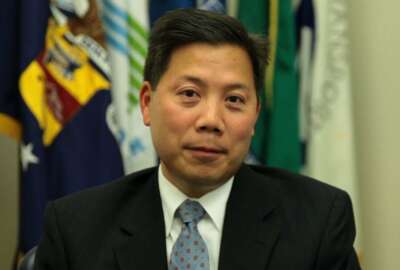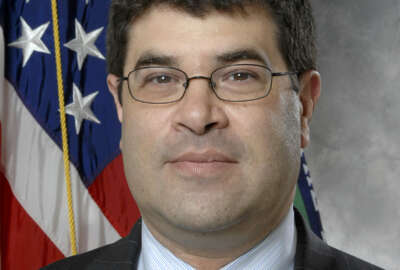
4 steps to a solid management agenda for the next administration
The next president's management agenda will be key in helping the new administration deliver on its agency priorities next year. The Partnership for Public Service...
The next president won’t have much time between Inauguration Day in January and the release of his or her first budget in March 2017.
“That’s a very quick period between January and March,” Dan Chenok, executive director of the IBM Center for the Business of Government, said during a Partnership for Public Service panel discussion on transition management Sept. 13 in Washington. “That involves…many, many hundreds, if not thousands, of decisions. Doing that in a short period of time really depends on developing and leveraging analytics, decision frameworks that understand how to take lots of different information and take it in and brief it to decision makers in structured ways.”
But success in making those decisions quickly depends on a sound management agenda, which the next administration should begin developing now as part of its transition planning work, the Partnership for Public Service said in a new report.
The Partnership, along with the IBM Center for the Business of Government, detailed a four-step “management road map,” to help the next administration build the foundation for successfully implementing new policies and decisions.
An effective management framework is essential to translating those ideas and visions to actual results, Chenok said.
“To manage that well is really the key linchpin in success on achieving those policy goals and priorities that all presidents articulate on the campaign trail,” he said.
Develop and manage talent
A good management strategy starts with the right people.
Sean O’Keefe, former NASA administrator, said the human dimension is perhaps the most challenging piece of the administration’s management puzzle.
“How do you prompt, motivate leadership teams at lots of levels to develop a cohesive interest in what the other interests are across agencies, departments, etc. and not be so singularly focused that you’ve created stovepipes of excellence that in turn run off by department or agency in their own field or their own focus that’s disconnected from what those larger objectives are,” O’Keefe said. “That’s tough.”
But finding the best leaders to take on unique challenges at each individual agency and keep the broader administration goals in mind is a major challenge, Scott Gould, former deputy secretary at the Veterans Affairs Department, said.
The best kind of political appointees should have operational skills and expertise, but they should also have leadership experience, the Partnership said.
“What you want is something to bind them together,” he said. “Frequently that is finding a common language, a common culture, a set of expectations, a road map and a sense of how the matches made between these very challenging jobs… and you’re trying to find a leadership team for each of them with radically different missions.”
Create an enterprise approach to government
Once new the administration has its leaders in place, it should encourage their employees to think about the broader goals at hand — rather than managing solely within their agency’s challenges and programs.
The new administration should take advantage of the President’s Management Council, to gather ideas and perspectives from each of its agency leaders, the Partnership recommended.
Gould, for example, remembered the role he took on in developing a cross-agency priority to end veterans’ homelessness.
VA worked with the Housing and Urban Development Department, as well as the Office of Management and Budget, to develop a plan. But the process wasn’t easy.
“It began with a simple idea,” Gould said. “We as leaders are going to commit to end veterans’ homelessness by date certain, using these funds. The layers that OMB came back [with] very practically and pragmatically… they said look, ‘you’re nuts. That violates one of the principle rules of major initiaitves in government. You’ve just told your stakeholders and the public exactly what you’re going to do, how to measure it and when it’s going to be done.'”
Gould said the argument to the President, who encouraged the departments to develop as a cross-agency plan.
Harness innovation
Administration leaders should also encourage their employees to think outside the box, the Partnership said.
“Your best ideas are coming from the people who are working with the problems on a daily basis, so if you can inculcate an environment where people step forward with new and innovative ideas and you’re receptive to them, you’ve gone a long way to ease that process,” Gould said.
The challenge for any administration, he said, is encouraging its leaders to focus on broader, more complex initiatives that transcend the “problem of the day.”
“Innovation begins when you have the leisure to pack the intellectual suitcase, to think deeply about issues, to test the ideas, to write, to publish,” Gould said. “The question is how to do you hold them up and then apply them in that frenetic government environment?”
Organize decision-making
The next administration will likely find itself in the position where it must respond to a crisis and continue to make long term management decisions and priorities at the same time.
In that case, Gould said, agencies often have a tendency to over think about the problem and solution. Agency leaders should listen to an array of ideas from their employees before acting.
“A senior leader, if they’re very capable in that environment, sits, listens and then subtracts,” he said. “They sort of simplify. They’ll pull out of the deck of five ideas, the two or three that are salient, trenchant to the issue at hand, and say okay, ‘I have enough to act. Perfection is the enemy. Good enough, time to go to the press or time to make my decision here.'”
Copyright © 2025 Federal News Network. All rights reserved. This website is not intended for users located within the European Economic Area.
Nicole Ogrysko is a reporter for Federal News Network focusing on the federal workforce and federal pay and benefits.
Follow @nogryskoWFED
Related Stories






